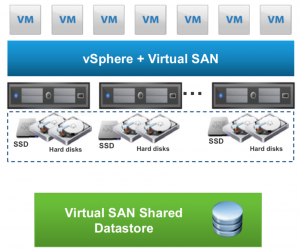Tutto ciò che devi sapere sul Platform Engineering e perché la tua azienda dovrebbe implementarlo
Data-driven Cloud
-
Cloud Assessment
Cloud Native Approach, scopri subito a che livello sei
-
Cloud Provider Partner
Lavoriamo su ogni piattaforma. Scopri partnership e competenze
-
Free Downloadable Content
Scarica la Guida Cloud Native Application
Platform Engineering
-
Toolchain
Scopri gli strumenti per implementare il metodo.
-
Free Downloadable Content
> Ebook Scopri cos’è il Platform Engineering e perchè implementarlo
Software Supply Chain Secured by Akit
-
Cloud Native Security
Servizi e tecnologie per la cloud security: privacy, protezione e compliance.
-
Toolchain
Scopri partner e tool per proteggere la tua infrastruttura
-
Free Downloadable Content
A breve disponibile
Kubernetes
-
Vantaggi di Kubernetes
Risolvere le complessità attraverso la gestione e la distribuzione in contenitori.
-
Free Downloadable Content
> Introduzione alla piattaforma Kubernetes (a breve disponibile)
> Guida alle versioni di Kubernetes (a breve disponibile)
-
Expertise
Scopri le 4 distribuzioni Kubernetes
Blog
-
Leggi l’ultimo articolo
Il nostro ultimo Blogpost
-
Vai all’elenco completo
Tutti gli articoli del nostro blog
Newsroom
Segui tutte le nostre news!
-
Leggi l’ultima news
La nostra ultima novità
-
Vai all’elenco completo
Lo storico di tutti i nostri articoli
Webinar
-
Vai all’ultimo webinar
La registrazione dell’ultimo webinar
-
Vai all’elenco completo
Tutti i nostri webinar e workshop
DownLoadable Content
-
GUIDA cloud native
7 regole per ottenere risultati efficaci
-
GUIDA devops
La Digital Transformation in azienda
-
Tutti i downloadable content
Elenco completo dei contenuti scaricabili
Servizi professionali
Oltre la consulenza: affiancamento strategico, studio delle esigenze e delle strategie, delle pratiche e dei tool migliori per l’evoluzione digitale.
-
Servizi Cloud
Scopri le attività di Cloud Transformation
-
Servizi DevOps
Il pacchetto per la modernizzazione applicativa
-
Servizi Akit
Security, Cloud Security e DevSecOps
Managed Services
Da MSP a MSK: il Managed service by Kiratech comprende tutti i servizi MSP con qualcosa in più. Cogestione 24/7 sulla toolchain Cloud Native.
-
Offerta MSK
Scopri strategie e aree di intervento
-
Team dedicato
Conosci il Tiger Team Kiratech (a breve disponibile)
I migliori Tool
Siamo reseller dei migliori software per la digital evolution. La nostra Toolchain è studiata su misura in base alle esigenze e ai progetti.
-
Cloud Tool
> Scopri i partner
> Guida ai tool -
Devops Tool
Scopri il catalogo
-
Akit Tool
Scopri i partner
Formazione
Un programma completo e autorevole di training per adottare l’approccio Cloud Native
-
Certificazioni
Vedi le nostre training partnership
-
Scopri i corsi
Vai all’elenco completo
Krateo
Krateo è la piattaforma di automazione open source per aziende enterprise che devono standardizzare e aumentare l’adozione Cloud Native utilizzando le API Kubernetes standard.
Funzionalità e vantaggi
Scopri come avere un unico ambiente di automazione comune.
Use case
Leggi i casi d'uso



